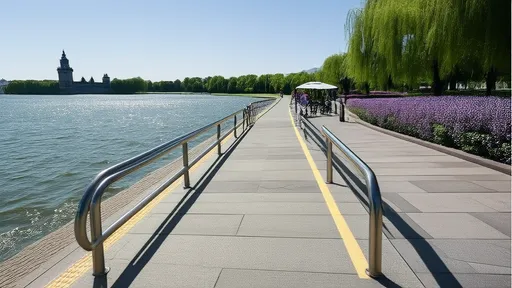In the heart of Nordic culture, the sauna stands as a sacred space for relaxation, socialization, and even spiritual cleansing. Yet for visitors unfamiliar with Scandinavian traditions, one question often looms larger than the steam itself: to bare or not to bare? The etiquette surrounding nudity versus swimwear in Nordic saunas reveals fascinating cultural nuances that go far beyond mere personal comfort.
The Nordic approach to sauna culture is deeply rooted in practicality and egalitarianism. Historically, saunas served as the only bathing facilities in rural communities, making them essential rather than luxurious. This utilitarian origin fostered a matter-of-fact attitude toward nudity that persists today. In Finland, where sauna-going is practically a national sport, the phrase "as God made you" perfectly captures this unpretentious philosophy. The absence of clothing allows for maximum heat exposure and prevents synthetic fabrics from releasing unpleasant odors when heated.
Public saunas in Sweden, Norway, and Finland typically enforce strict gender separation when nudity is expected. The classic wooden "kabins" of Stockholm's public baths or Helsinki's legendary saunas maintain this tradition with military precision. Visitors might notice older generations moving through steam rooms with the nonchalance of someone wearing a winter coat, while younger Scandinavians increasingly adopt the "towel wrap compromise" - maintaining modesty without sacrificing authenticity. This generational shift reflects broader European attitudes toward body exposure in communal spaces.
When swimwear enters the equation, the cultural calculus becomes more complex. Many modern spa facilities catering to international tourists explicitly require swimsuits, particularly in mixed-gender settings. The chlorine in pool water presents a practical concern - synthetic fibers can degrade when exposed to intense heat after swimming, creating unpleasant chemical smells. High-end Nordic spas often provide sauna-specific garments made from natural fibers as a thoughtful middle ground. These allow for modesty without compromising the purity of the sauna experience.
The archipelago saunas of Finland present an interesting case study in contextual etiquette. These seaside retreats often follow a "naked inside, covered outside" protocol. Patrons disrobe completely for the sauna itself but don swimwear or wrap towels when moving between the steam room and cooling-off spots in the sea. This hybrid approach respects the practical needs of moving through semi-public spaces while maintaining sauna purity. The brief moments of running from sauna to shoreline in winter, when air temperatures plunge below freezing, become exhilarating rituals that bond participants through shared vulnerability.
International visitors should note that Nordic sauna etiquette varies significantly by setting. Urban commercial saunas frequented by locals often maintain traditional nude expectations, while resort-style spas accustomed to foreign guests typically adopt more flexible policies. The golden rule remains: observe what others are doing and follow suit. In Helsinki's Löyly or Stockholm's Hellasgården, a quick visual survey of hooks outside the sauna door tells the story - clusters of towels suggest a wrap culture, while empty hooks signal nude tradition. When in doubt, a discreet inquiry never hurts; Scandinavians appreciate directness and will happily clarify expectations.
Beyond mere practicality, the Nordic approach to sauna attire carries profound cultural significance. The equalizing nature of nudity reflects core Scandinavian values of fairness and humility. In the sauna's heat, social hierarchies melt away along with physical barriers. This explains why business meetings sometimes conclude in the sauna - without the "armor" of clothing and status symbols, negotiations theoretically become more transparent. Contemporary debates about body positivity and naturalism find fertile ground in these steamy chambers, where imperfections are laid bare in the most literal sense.
For travelers navigating these unwritten rules, remember that discomfort often stems from overthinking rather than actual judgment. Regular sauna-goers focus on their own experience, not others' bodies. The key lies in adopting the Nordic mindset: view the sauna as a temporary retreat from societal pressures rather than an arena for them. Whether choosing to embrace local traditions or maintain personal boundaries, what matters most is respecting the space's therapeutic purpose. After all, the perfect löyly - that burst of steam when water hits hot stones - deserves everyone's undivided attention, regardless of what anyone is or isn't wearing.

By /Jul 25, 2025

By /Jul 25, 2025

By /Jul 25, 2025

By /Jul 25, 2025

By /Jul 25, 2025

By /Jul 25, 2025

By /Jul 25, 2025

By /Jul 25, 2025

By /Jul 25, 2025

By /Jul 25, 2025

By /Jul 25, 2025

By /Jul 25, 2025

By /Jul 25, 2025

By /Jul 25, 2025

By /Jul 25, 2025

By /Jul 25, 2025

By /Jul 25, 2025

By /Jul 25, 2025

By /Jul 25, 2025

By /Jul 25, 2025